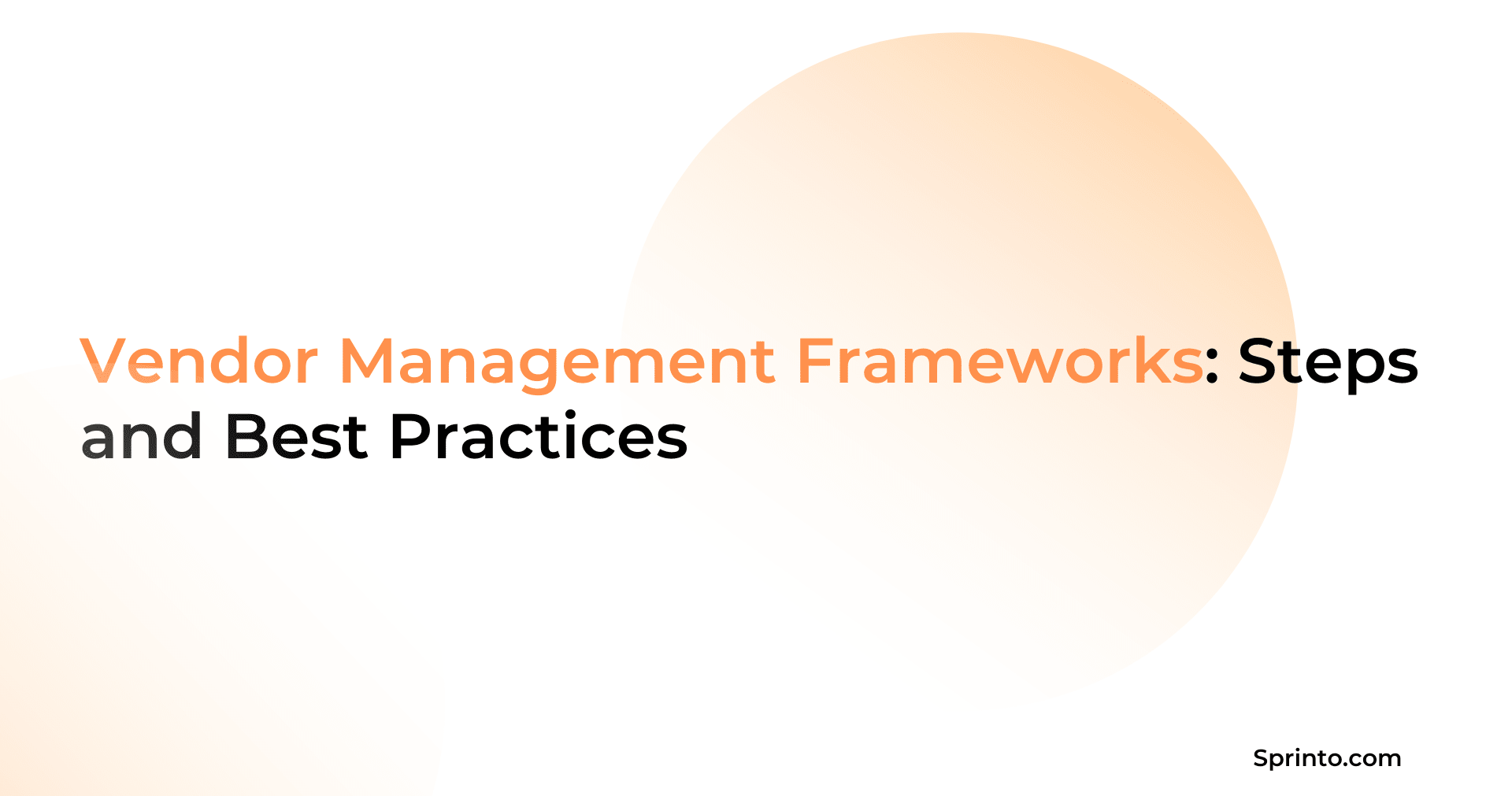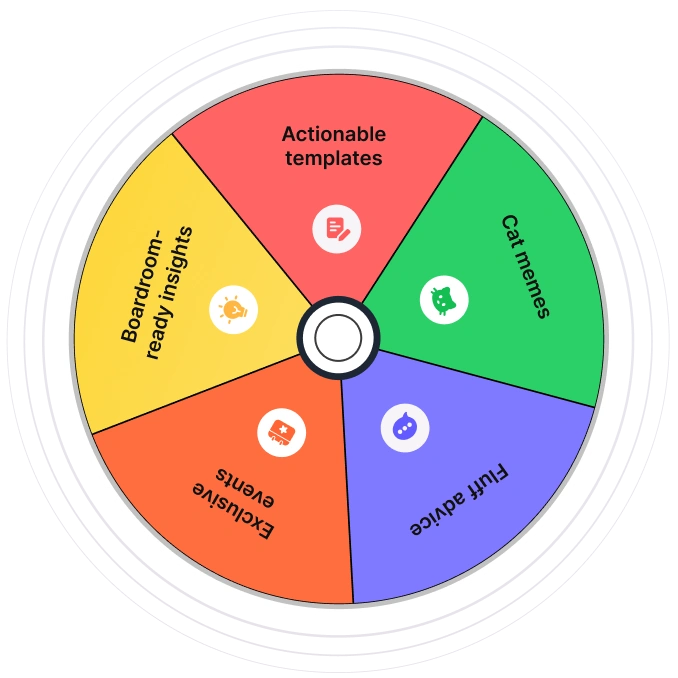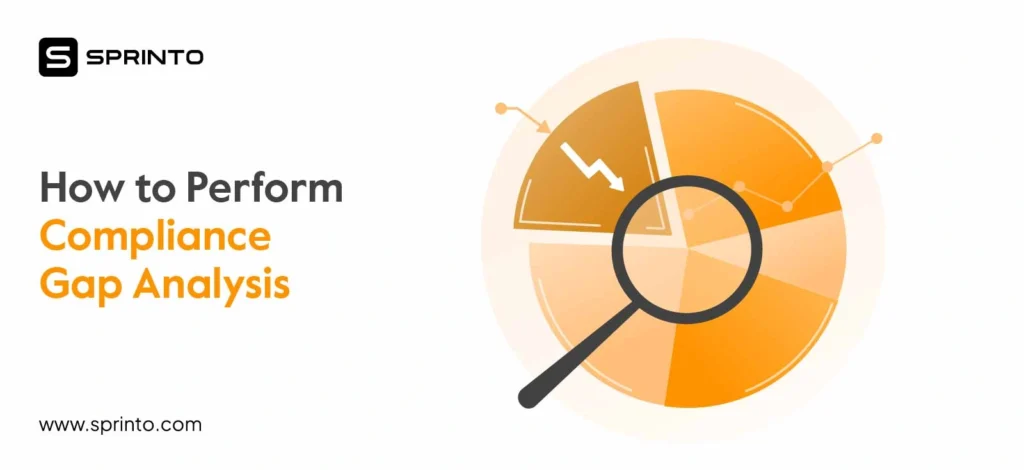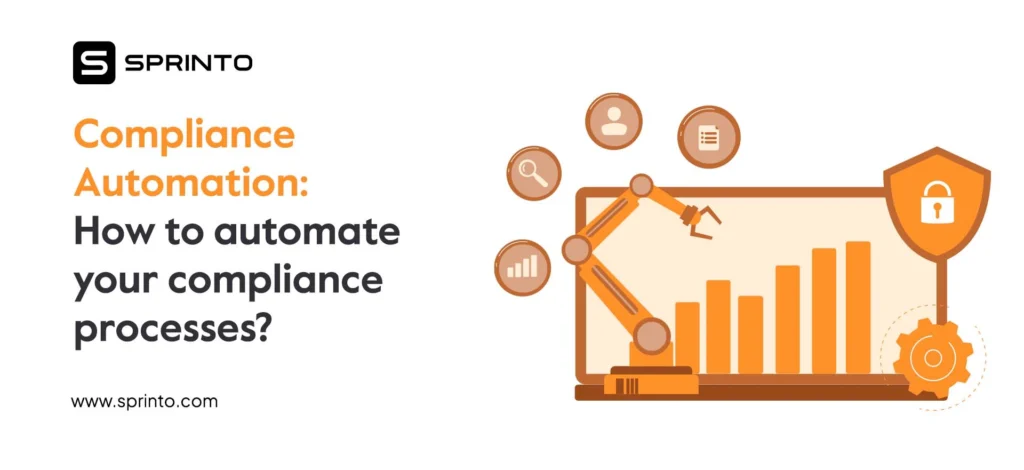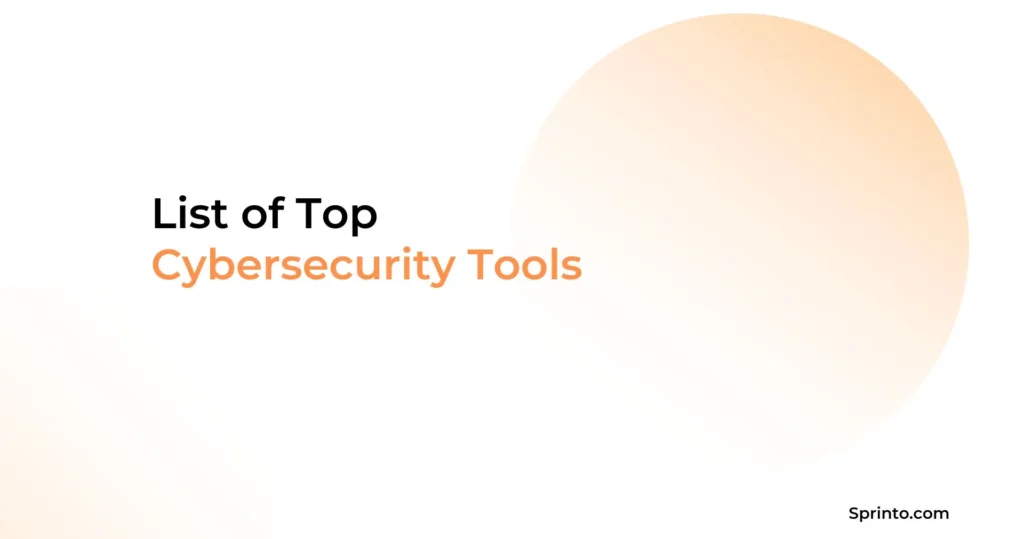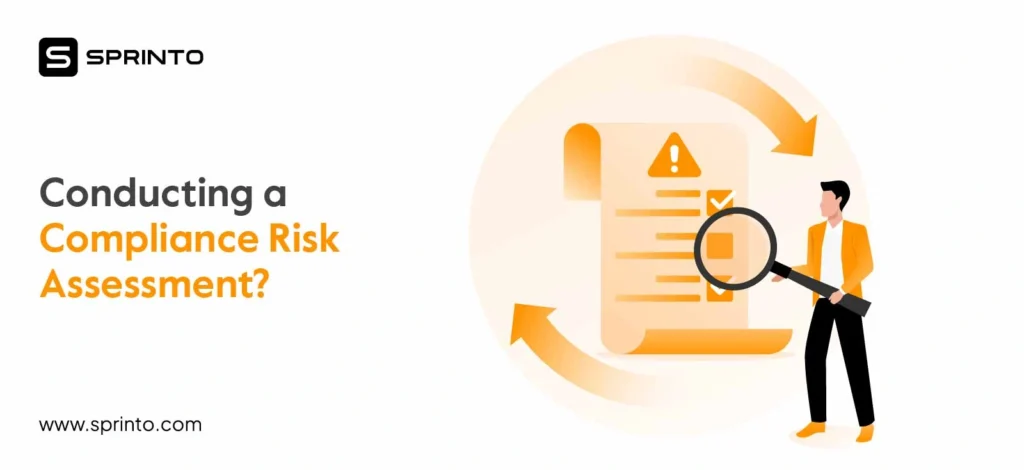The worst thing about vendor management isn’t that companies do it badly. It’s that they think they do it well.
There’s a spreadsheet somewhere. Contracts live in a shared folder. You have a procurement process in place. Yet vendors still slip through the cracks, renewals catch teams off guard, and audits become fire drills.
Because what you’re calling vendor management is really just paperwork. You need a robust framework that aligns vendor oversight with your security, compliance, and business continuity goals.
What is a vendor management framework?
A vendor management framework is your organization’s playbook for selecting, onboarding, monitoring, and offboarding vendors. It ensures vendors are managed with the same discipline as internal operations.
A solid framework accomplishes:
- Vendor due diligence: Centralized tracking of vendors, their dependencies, and documentation—so only qualified vendors enter your ecosystem
- Secure onboarding: Structured workflows for risk reviews, compliance checks, and access approvals before vendors go live.
- Ongoing monitoring: Continuous performance and service level agreement (SLA) tracking, certificate and compliance status monitoring, and early warning signals for drift.
- Disciplined offboarding: Automated renewal alerts, contract closure, and clean revocation of vendor access with data return obligations enforced.
- Defined governance: Clear rules and accountability over who approves what, when, and why
Benefits of having a well-defined vendor management framework
When vendor management is structured instead of scattered, the benefits ripple across your entire organization:
- Enhanced data security: Ongoing vendor risk assessments, continuous monitoring, and defined incident-response playbooks prevent vendors from becoming a blind spot in your security posture.
- Stronger reputation and trust: Demonstrating stability across your vendor ecosystem signals reliability to customers, regulators, and partners.
- Proactive risk identification: A structured framework lets you surface vulnerabilities before they materialize into outages, compliance gaps, or breaches. You know precisely which vendors handle customer data or which ones have access to critical systems, and how their risk levels stack, so when an incident occurs, proactive risk identification helps you can gauge exposure and respond immediately.
- Financial efficiency: Centralized visibility into contracts and spending helps you avoid redundant services and reduce vendor spending.
- Operational resilience: Business continuity planning extends to vendors, ensuring disruptions an outage or a vendor acquisition don’t derail core operations.
- Streamlined compliance alignment: Vendor oversight maps directly to requirements in SOC 2, ISO 27001, HIPAA, and GDPR, reducing audit burden and strengthening evidence quality.
- Improved vendor performance: Defined scorecards and structured feedback loops drive accountability, improve SLA adherence, and create healthier long-term partnerships
- Speed: With defined escalation procedures, what took six weeks now takes six days. Your onboarding process becomes predictable and repeatable.
Vendor Management vs Supplier Management
Suppliers provide materials (think office supplies, manufacturing inputs), and vendors provide finished services (your CRM, payroll processor, cybersecurity tools).
To spell it out: Supplier failures mean finding alternatives. Vendor failures mean existential risk.
What this means in practice:
| Factor | Vendor Management | Supplier Management |
| Core aspect | Supplier management is about efficiency: cost optimization, quality control, and supply chain continuity | Vendor management is about resilience: data security, service availability, and regulatory compliance |
| Risks | Supplier risks slow you down: a late shipment impacts production timelines | Vendor risks can stop you cold: a payroll outage, CRM downtime, or cloud breach disrupts core operations |
| Oversight | Supplier oversight can be periodic: annual reviews or performance scorecards are often sufficient | Vendor oversight must be continuous: critical vendors demand real-time monitoring, ongoing risk assessments, and compliance evidence |
| Contracts | Supplier contracts are usually straightforward: purchase orders, delivery terms, and quality guarantees | Vendor contracts are complex: SLAs, data-handling clauses, incident response requirements, and termination obligations |
| Changes | Supplier changes cause operational adjustments: swapping a raw material source requires retooling or renegotiating | Vendor changes can trigger governance shifts: acquisitions, platform pivots, or data residency changes may require board-level decisions |
The core components of a vendor management framework
While the details vary by company size, industry, and regulatory environment, every vendor management framework rests on a few non-negotiable building blocks:
1. Vendor evaluation and selection
Choosing the right vendor starts with defined criteria. Beyond pricing, this means weighing security maturity, service reliability, financial stability, and customer track record.
Strong evaluations also factor in how the relationship will fit into your environment, which means categorizing vendors by:
- Data access levels (PII, financial, health)
- Business criticality (does the service support core operations or not?)
- Regulatory impact (frameworks and obligations triggered)
- Relationship type (strategic partner vs. commodity provider)
Bringing IT, security, procurement, finance, and legal into the evaluation avoids one-sided decisions and ensures stakeholders are aligned before a contract is signed.
2. Risk classification
Not all vendors carry the same level of exposure. Classify them by inherent risk (what data and systems they touch) and residual risk (what controls they have in place).
Practical signals to include in your assessment are:
- Certificate expirations (e.g., SOC 2 or ISO 27001 validity)
- Financial health indicators (credit ratings, funding stability)
- Support responsiveness (trends in resolution times)
- Compliance drift (missed remediations or failing controls)
This allows you to group vendors into clear tiers—high, medium, or low risk—and apply oversight accordingly. A customer-facing SaaS handling PII requires continuous scrutiny, while a commodity tool might only need a light review.
3. Contract governance
Contracts are not a sign-once-and-forget artifact; they should be treated as active control instruments. Centralizing and standardizing them ensures that your organization can consistently enforce these protections.
At a minimum, track and enforce clauses covering:
- Renewal dates (with 90-day advance warnings)
- Price adjustment limits
- Termination clause requirements
- Data return and deletion obligations
4. Performance monitoring and reporting
Frameworks need validation in practice. Monitor service delivery, SLA compliance, certificate validity, and issue responsiveness.
Match review frequency to vendor criticality: continuous monitoring for essential providers, quarterly checks for significant vendors, and annual reviews for low-risk ones. Regular reporting gives operational teams and executives a clear picture of vendor performance and risk posture.
5. Clear governance structure
Set the rules of the game before issues arise. Define who has authority to approve vendors at different thresholds, when exceptions require executive review, and how major events—like acquisitions, platform changes, or new data residency—trigger reassessment.
Your governance model should explicitly outline:
- Spending thresholds that trigger security reviews
- Data classification requirements tied to vendor tiers
- Geographic restrictions on where data can be processed or stored
- Incident notification SLAs that dictate reporting timelines
Without a clear governance model, disruptive changes (e.g., your core SaaS vendor going cloud-only or being acquired by a competitor) can quietly undermine your controls.
How to build a solid vendor management framework for your organization
A strong vendor management framework is a system that evolves with your business. Follow these eight steps to design one that’s both practical and resilient.
1. Define your objectives
Start by clarifying what you want the framework to achieve. Anchor the framework in business goals.
Decide whether the priority is cost control, regulatory compliance, resilience, speed of onboarding, or all of the above. Clear objectives prevent the program from becoming a box-ticking exercise.
2. Take inventory of current vendors
Next, establish your baseline.
Run a vendor census to capture your baseline: contract details & length, spend, data access, certifications, and business criticality. Also, document exactly what’s required from each vendor.
These surfaces shadow IT, highlight redundancies, and reveal where unmanaged risks already exist.
3. Segment vendors by criticality
Not all vendors require the same level of oversight.
Group vendors into tiers—critical, important, and low-risk—based on their data access, operational impact, and regulatory exposure. Segmentation ensures that oversight intensity matches the stakes.
4. Define risk and selection criteria
Establish objective rules for onboarding and monitoring. Criteria should include financial stability, security maturity, regulatory posture, and performance history. IT, security, legal, finance, and procurement stakeholders should be involved to avoid blind spots.
Use quantifiable tiers to guide oversight:
- High risk: Access to customer PII, critical infrastructure, and regulatory data
- Medium risk: Internal data access, necessary but replaceable services
- Low risk: No data access, commodity services
These risk labels should determine your audit frequency and set the security requirements each vendor must meet.
While risk labels are helpful, you must ask sharper questions when required. For example, swap ” What’s the risk score?” with “What’s the probability of a material incident in 12 months?”
5. Standardize the vendor lifecycle
Consistency matters. Design a repeatable path every vendor follows:
Initial Engagement & Assessment → Due Diligence → Compliance & QC → Onboarding → Risk Assessment → Monitoring → Offboarding
At each stage, build in checkpoints for security reviews, legal approvals, and finance sign-offs based on vendor tier. A $500/month SaaS tool might only need a questionnaire, but a payment processor handling cardholder data requires the full due diligence cycle.
6. Establish governance roles and policies
Define who approves vendors, how exceptions are escalated, and what triggers a reassessment.
Major change events—like acquisitions, data residency shifts, or platform pivots—should be hard-coded into governance rules and not handled ad hoc.
7. Leverage technology and automation
Manual processes can collapse at scale. Use vendor management software (or GRC platforms like Sprinto) to centralize contracts, automate renewals and risk questionnaires, and store evidence.
Automation reduces manual effort and ensures you’re always audit-ready.
8. Monitor, report, and improve continuously
A framework isn’t static; it’s a living system.
Set performance rhythms: monthly for critical vendors, quarterly for significant vendors, annually for low-risk vendors. Track SLA adherence, certificate validity, and compliance drift.
Finally, review the framework periodically to ensure it aligns with organizational priorities.
Manage your vendors with Sprinto’s built-in vendor management framework
You don’t lose control all at once.
First, it’s a spreadsheet no one updates. Then a contract slips through an inbox. Then, an SLA that no one has tracked in months.
When the stress test comes—an audit, a breach, an acquisition—those hidden cracks decide the outcome.
Sprinto makes sure those cracks never appear. Here’s what vendor control looks like when it’s done right:
- Centralized truth: All vendor data—contracts, risk assessments, compliance docs—in one place. No more shared drive archaeology.
- Smart risk scoring: Vendors are automatically tiered by risk level, so you know where to focus attention.
- Lifecycle automation: Every step runs on defined workflows from intake to renewals. Approvals are routed, renewals surface on time, and performance scorecards refresh without manual effort.
- Compliance alignment: Controls map to SOC 2, ISO 27001, HIPAA, and GDPR. Evidence is generated continuously, making audits smoother and faster.
- Ongoing monitoring: Vendor posture is tracked in real time, with alerts that flag breaches, drifts, or high-risk changes before they turn into incidents
FAQs
1. What’s the difference between a vendor management framework and a TPRM framework?
Vendor management focuses on operational relationships—contracts, performance, costs. TPRM (Third-Party Risk Management) encompasses all external party risks, including contractors, consultants, affiliates, tax agencies, etc. Think of vendor management as a critical component within broader TPRM.
2. How does a vendor management framework support risk management?
Your framework becomes an early warning system. By categorizing vendors by risk level and continuously monitoring their security postures, you spot problems before they become crises. When a vendor announces a breach, you know immediately if you’re affected.
3. What industries require vendor management frameworks the most?
Financial services and healthcare face explicit regulatory requirements. But every industry needs these frameworks now—retail processes payments, tech handles user data, and manufacturers rely on suppliers. The question isn’t whether you need a framework, but whether you build one proactively or after your first incident.
4. How do vendor management frameworks align with ISO or NIST standards?
ISO 27001 Clause 15 explicitly requires supplier relationship management. NIST’s Cybersecurity Framework embeds vendor risk throughout. A well-designed vendor management framework aligns with these standards because they solve the same problem: external parties introduce risk that needs systematic management.
5. How does vendor management tie into compliance (SOC 2, ISO 27001, HIPAA)
Your framework satisfies multiple compliance requirements simultaneously. SOC 2’s criteria require vendor risk assessments, which your framework provides. ISO 27001’s supplier controls map to your vendor lifecycle. HIPAA’s Business Associate requirements integrate into your onboarding workflow. One efficient process satisfies all requirements.
Raynah
Raynah is a content strategist at Sprinto, where she crafts stories that simplify compliance for modern businesses. Over the past two years, she’s worked across formats and functions to make security and compliance feel a little less complicated and a little more business-aligned.
Explore more
research & insights curated to help you earn a seat at the table.



